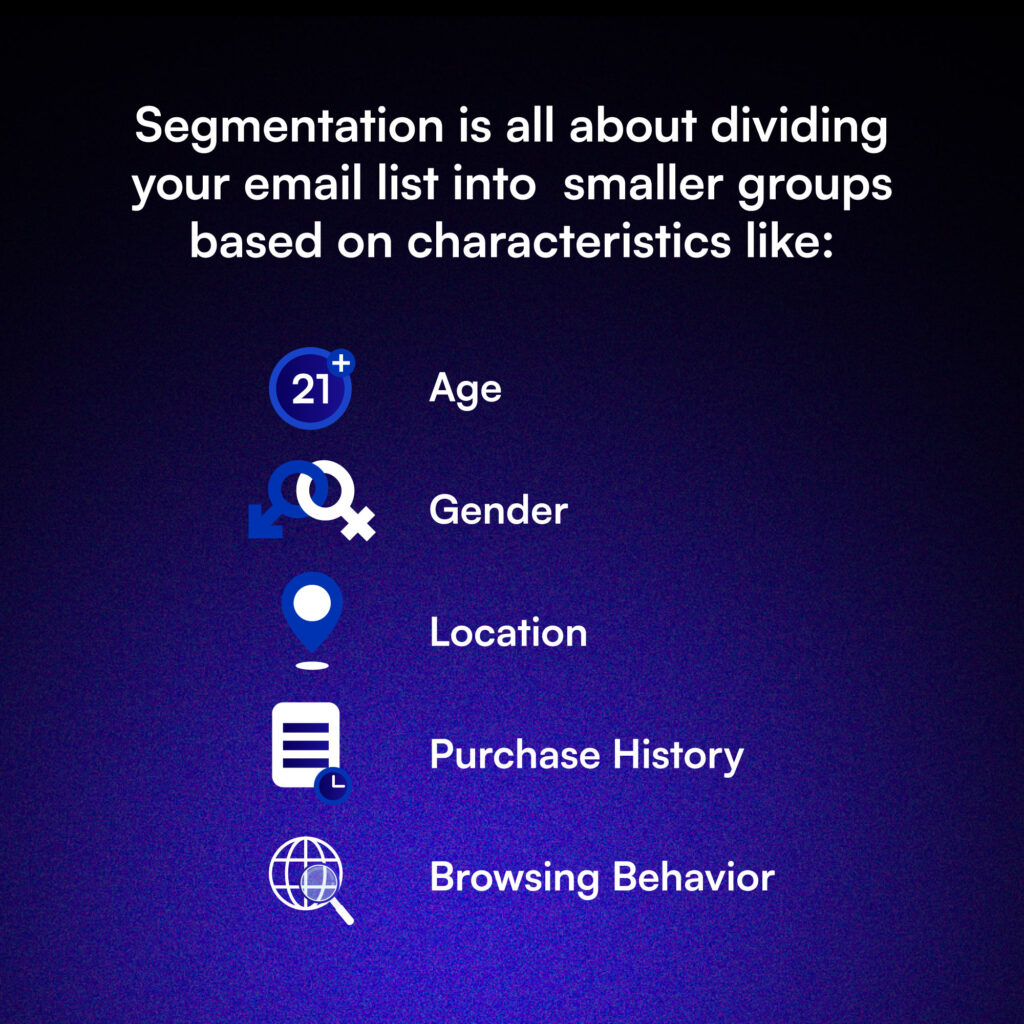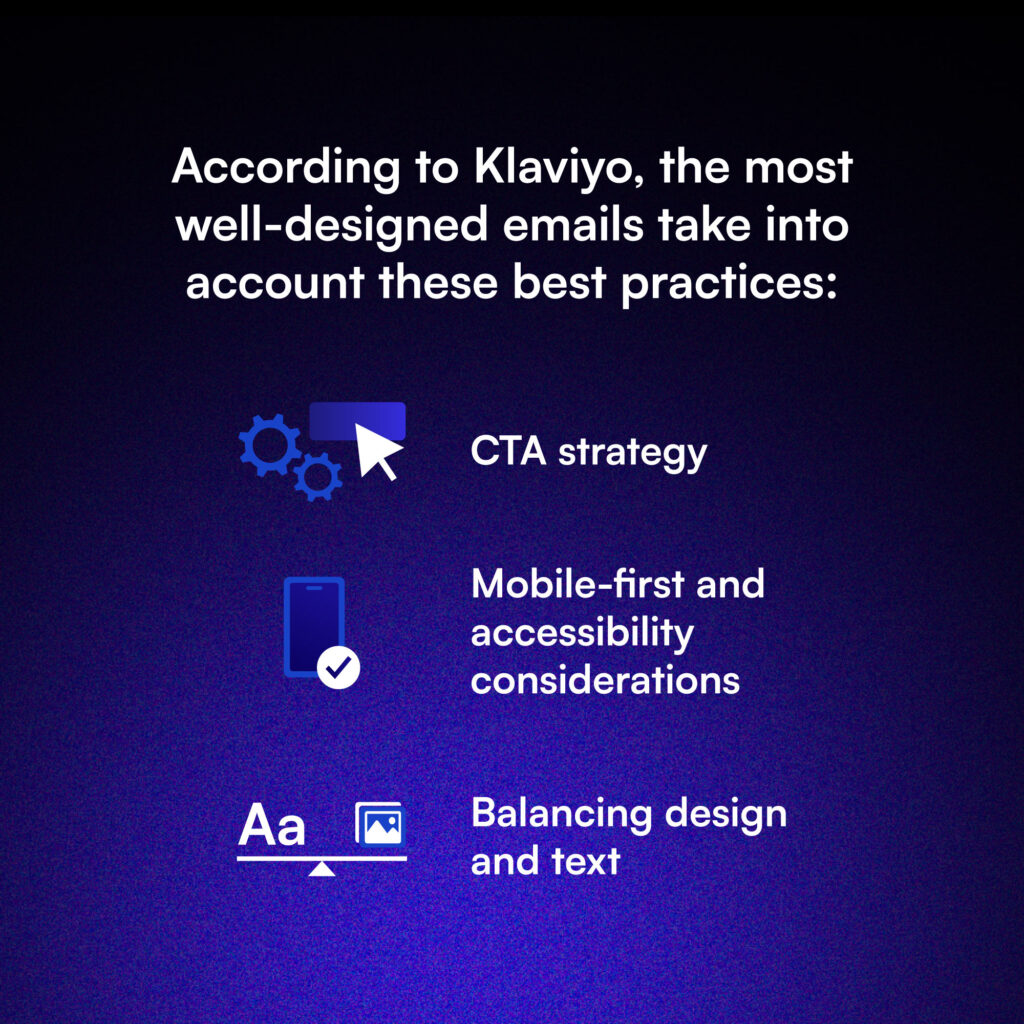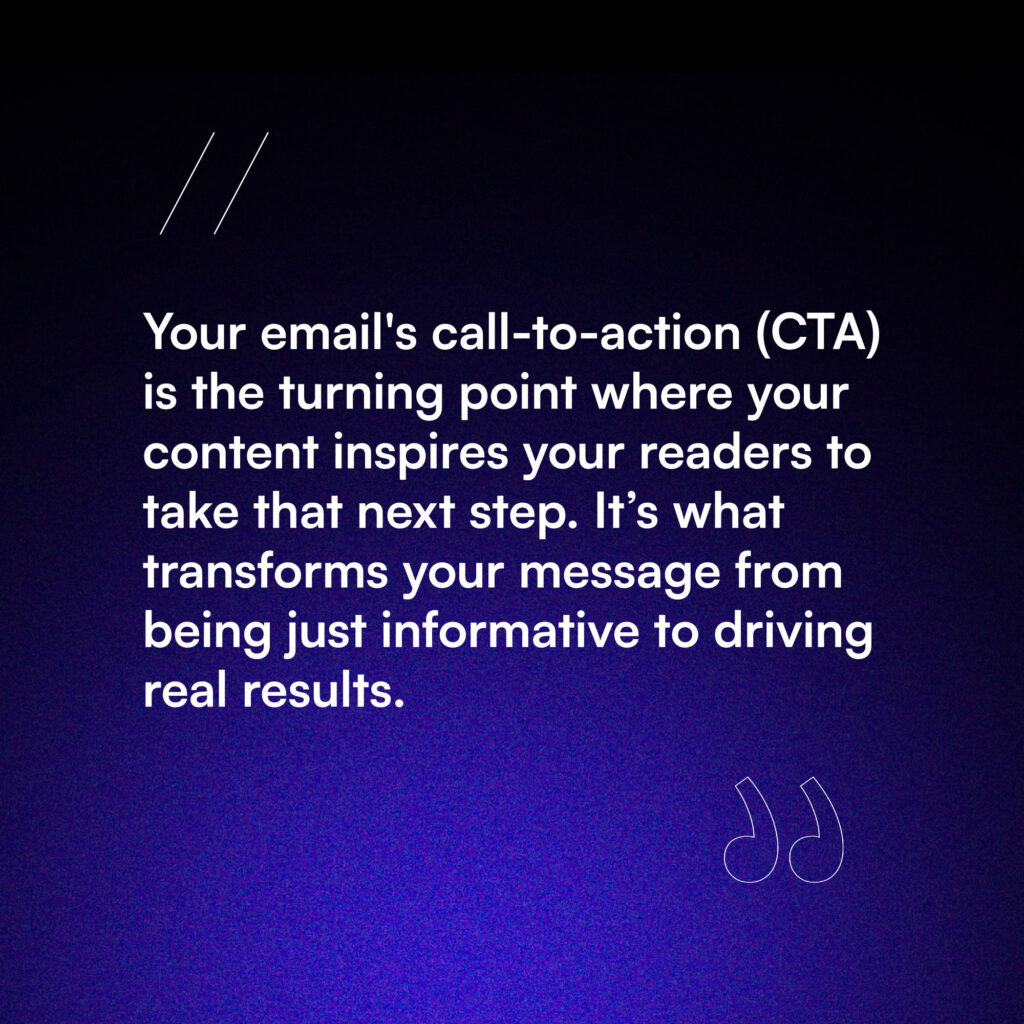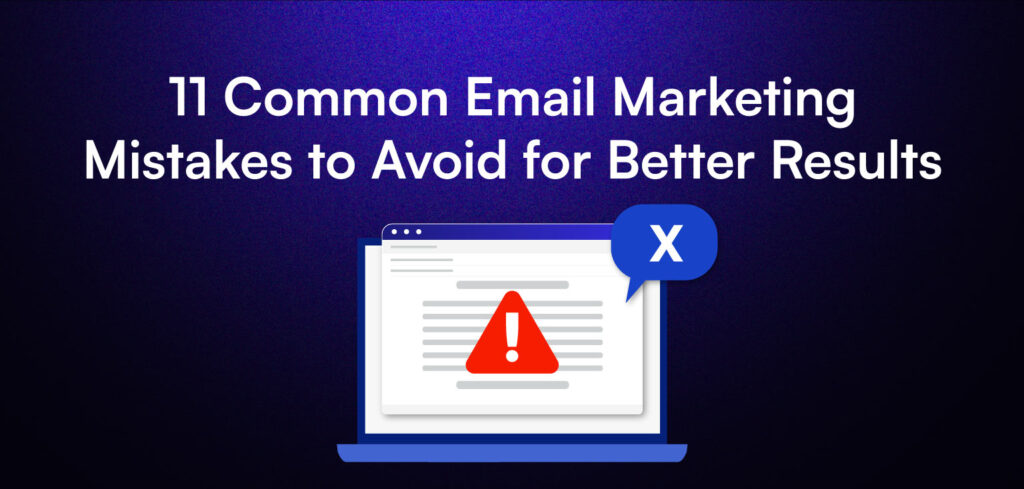Let’s face it: email marketing can be tricky. You might spend hours crafting the perfect email, only to get crickets when you hit “send.”
Frustrating, right? The reality is that many marketers unknowingly fall into the same traps that sabotage their email campaigns.
But the silver lining? By identifying these common email marketing mistakes, you can avoid them and significantly improve your results.
In this guide, we’ll walk you through 11 email marketing missteps you might be making—and more importantly, how to steer clear of them.
Ready? Let’s dive in.
E-Commerce Email Marketing Mistakes That Could Be Hurting Your Sales
Email marketing can be a game-changer for your e-commerce business—when it’s done right. But we’ve all been there. If an email lands in your inbox at the wrong time feels impersonal, or misses the mark entirely.
If this sounds familiar, it’s worth checking if a few simple mistakes in your email strategy could be costing you sales without you even realizing it.
1. Not Segmenting Your Email List
One-size-fits-all emails just don’t cut it anymore.
Imagine this: you’re a clothing retailer, and you send an email about men’s jackets to your entire list, which includes women, teenagers, and older adults. Chances are, most of your audience will tune out because the message doesn’t speak to them.
That’s where segmentation comes in!

This way, you can tailor your emails to match each group’s preferences.
According to research, segmenting your emails can get you about 30% more opens and 50% more clickthroughs than those generic, one-size-fits-all emails.
Think about that for a second.
By simply tweaking your messaging to match what your audience cares about, you can skyrocket your engagement and sales. It’s that powerful.
Quick Tip: Start small. Segment your list into two or three basic groups and send tailored content to each. Once you get the hang of it, dive deeper into advanced segmentation.
Not sure where to start? No worries!
Grab this FREE email marketing plan to elevate your strategy.
2. Ignoring Email Deliverability
You could have the most brilliantly crafted email in the world, but it won’t matter if it ends up in the spam folder.
Email deliverability is about ensuring your emails reach your subscribers’ inboxes. It’s a behind-the-scenes aspect of email marketing that many overlook, but absolutely crucial.
There are several factors that impact deliverability. Using an outdated email list full of inactive or incorrect addresses can hurt your reputation with email providers.
And if you’re using spammy phrases like “Buy Now!!!” or “Act Fast!!!” in your subject lines, you’re practically begging to be filtered out as junk or spam.
How to Improve Deliverability:
- Regularly clean your email list by removing inactive subscribers.
- Avoid spammy language and excessive punctuation in your emails.
- Monitor domain and IP health using Google Postmasters
- Use double opt-in (where subscribers confirm their sign-up) to ensure you’re reaching genuinely interested people.
You can also read: Improve Your Email Deliverability: A Complete Guide
3. Failing to Personalize Content
This way, you can tailor your emails to match each group’s preferences.
According to research, segmenting your emails can get you about 30% more opens and 50% more clickthroughs than those generic, one-size-fits-all emails.
Think about that for a second.
By simply tweaking your messaging to match what your audience cares about, you can skyrocket your engagement and sales. It’s that powerful.
Quick Tip: Start small. Segment your list into two or three basic groups and send tailored content to each. Once you get the hang of it, dive deeper into advanced segmentation.
Not sure where to start? No worries!
Grab this FREE email marketing plan to elevate your strategy.
4. Using Weak or Misleading Subject Lines
Your subject line is the gatekeeper to your email’s content. It’s the first thing people see, and if it doesn’t grab their attention, they’re not going to open your email—no matter how amazing the content inside is.
Avoid overly salesy, misleading, or vague subject lines. If you promise something in the subject, make sure you deliver it in the email. There’s nothing worse than opening an email expecting a discount, only to find it’s not there.
Examples of Strong Subject Lines:
- “Your Guide to Holiday Savings – Up to 50% Off!”
- “We Thought You Might Like These Picks, [First Name]”
- “Limited-Time Offer: 2-for-1 on All Sweaters!”
Remember: Be authentic, concise, and clear. A little curiosity goes a long way, but always stay true to what your email offers.
Read this next: 7 Effective Subject Line Formulas to Boost Your Open Rates
5. Overloading Subscribers with Emails
We’ve all been there—bombarded by emails from a brand that seems to pop up in your inbox every single day. It’s exhausting, and it’s a surefire way to push subscribers to hit that “unsubscribe” button.
Finding the right email frequency is key. While you want to stay top-of-mind, you don’t want to become an annoyance.
So, how many marketing emails should you send per week?
Most marketers find that sending 2-4 emails per week keeps their brand in front of subscribers without becoming a nuisance. But remember, there’s no one-size-fits-all rule.
How to handle frequency:
- Test different sending schedules.
- Offer frequency preferences, allowing subscribers to choose how often they hear from you.
- Monitor engagement and unsubscribe rates to find the right balance.
6. Neglecting Mobile Optimization
It’s 2024, and over half of emails are opened on mobile devices. Yet, many brands still send emails that look clunky or are hard to read on a smartphone. This is one of the common email marketing mistakes you surely must avoid at all costs.
If your email isn’t optimized for mobile, you’re missing out on a huge chunk of your audience.

Pro Tip: Always test your emails on multiple devices before hitting send. It takes a little extra time, but it ensures that every subscriber gets a top-notch experience.
7. Not Testing Before Sending
Sending an email without testing it first is like baking a cake without checking the recipe—it’s a recipe for disaster. You’d be amazed how often emails go out with broken links, typos, or images that don’t load properly.
Hence, make sure to review subject lines, email designs, and CTAs to ensure everything looks and works as expected. The more thoroughly you test, the more confident you’ll be that your message resonates with your audience, leading to better results.
8. Focusing Too Much on Sales
Yes, the goal of email marketing is to drive sales. But if every email feels like a hard sell, your subscribers will start tuning out. Instead, focus on building a relationship by offering value.
Share tips, how-to guides, or even behind-the-scenes looks at your brand. When you provide value, sales will naturally follow.
9. Ignoring Email Metrics
How do you know if your email campaign was a success? — By diving into your email metrics.
Open rates, click-through rates, bounce rates, and unsubscribe rates all provide valuable insights into how your emails are performing. If you’re ignoring these numbers, you’re missing out on opportunities to improve.
10. Complicated Call to Action (CTA)

Whether you want them to check out a new product, sign up for a webinar, or download a guide, your CTA must be clear and direct. Think of it as a friendly nudge that makes it easy for your audience to take action.
The key is to keep your CTA simple and impossible to miss.
Use strong, action-oriented phrases like “Shop Now,” “Get Started,” or “Learn More.” These phrases tell readers exactly what to expect when they click
Also, avoid overloading your email with multiple CTAs, as it can confuse or overwhelm your subscribers. Instead, focus on one clear and compelling action you want them to take. That single, well-crafted CTA will have a much greater impact than scattering several weaker ones throughout your email.
11. Not Complying with GDPR/Privacy Regulations
Compliance isn’t the most exciting topic, but it’s incredibly important.
Not following GDPR or privacy laws can lead to hefty fines and damage your brand’s reputation. Always get explicit permission before adding someone to your list, provide a clear unsubscribe option, and respect your subscribers’ privacy.
Your Turn
Email marketing doesn’t have to be complicated, but it does require attention to detail.
By avoiding these 11 common email marketing mistakes, you’ll set yourself up for more successful campaigns, higher engagement, and better results. Take the time to refine your strategies, learn from your metrics, and always keep your subscribers’ needs at the forefront.
That’s how you turn good email marketing into great email marketing!


